Many people would like to begin a vegetable, fruit, or flower garden but do not have the necessary outside area to do so. Many individuals nowadays live in flats or high buildings and have e little outside area for gardening. Fortunately, gardeners are no longer limited to raising raised beds or planting in-ground gardens, and there are a vast range of vegetables, fruits, and flowers that thrive in containers. Growing vegetables in containers allow you to have a vegetable garden on your balcony, patio, or even inside beside a sunny window.

Gardeners who grow their veggies in containers also have the option of bringing their crops inside when the weather turns chilly. Many plants that are grown outdoors can also be grown indoors by containers. The vegetables and fruits flourish in containers as long as you provide them with proper maintenance and care, the same goes with plants. Keep the plant in a large container that allows them space to grow their roots comfortably. Let’s check out apartment balcony gardening in small area.
Apartment Balcony Gardening in Small Area
How to grow vegetables on your balcony?
What vegetable plants can you grow on your balcony?
You can grow several plants such as Tomatoes, Peppers, from Eggplant Onions, Radishes, and Beans. All of them, as well as many herbs, can be grown in pots. In balcony gardens, container gardening is gaining popularity. When cultivating a vegetable garden on a balcony, you can use any sort of container.
Choose clay pots, plastic pots, or simple containers to enhance your balcony garden. Check to see that the container you select has adequate drainage. The drain holes should be put on the container’s sidewalls. They should be roughly a quarter to a half-inch (6 mm to 1 cm) from the container’s bottom.
In case you miss this: Gardening Basics for Beginners: For Pots, Terrace, Balcony, and Backyard
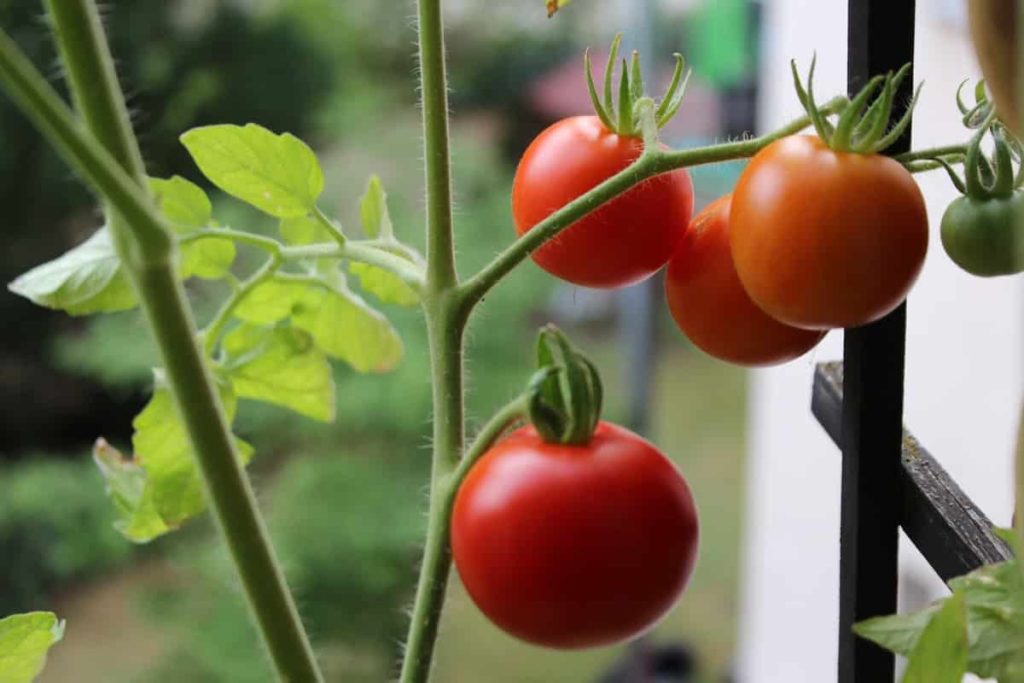
Sunlight required for vegetables
Heat can be a major concern if sunlight doesn’t reflect off the windows. Lettuce, on the other hand, would just wilt. You can try tropical plants if you don’t receive enough sunlight. A single pot of alocasia, banana, or canna can give the room a jungle vibe. Succulents will thrive in this environment. See your balcony as a small room. If you have the space, set up a table and chairs and relax amid the foliage.
Watering your vegetables
It’s a long way to tote jugs of water if you’re growing on a rooftop. Use a drip water system or pots that water themselves. You might also get a watering can that can be easily filled from the bathtub. Be considerate and place saucers or trays beneath your plants to catch the excess water.
Take care of wind
Keep an eye out for any unusual circumstances. The higher you go, the more wind you’ll get, and hot, drying breezes will soon dry out your plants. A wire trellis that deflects prevailing winds while still supporting climbing vines can have a dual purpose. It will also provide a sense of seclusion. You must remain on top of watering because of the drying effect of the wind. Consider using self-watering pots. Introduce the leaves to their new location slowly to avoid sun and windburn.
How to grow fruits on your balcony?
What fruits can you grow on your balcony?
Fruits will be abundant on dwarf fruit trees that never grow taller than 1.5 meters. And the fruit is frequently just as excellent as that produced on traditional trees! Apricots, almonds, cherries, peaches, pears, apples, and plums are all self-fruiting varieties that are suited for small regions. These trees can also be readily relocated to escape uncomfortable weather. Some varieties, referred to as columnar trees, were chosen for their narrow shape. This is a fantastic way to save room on a tiny balcony.
In case you miss this: How to Start a Small Kitchen Garden: In Pots, Balcony, and at Home
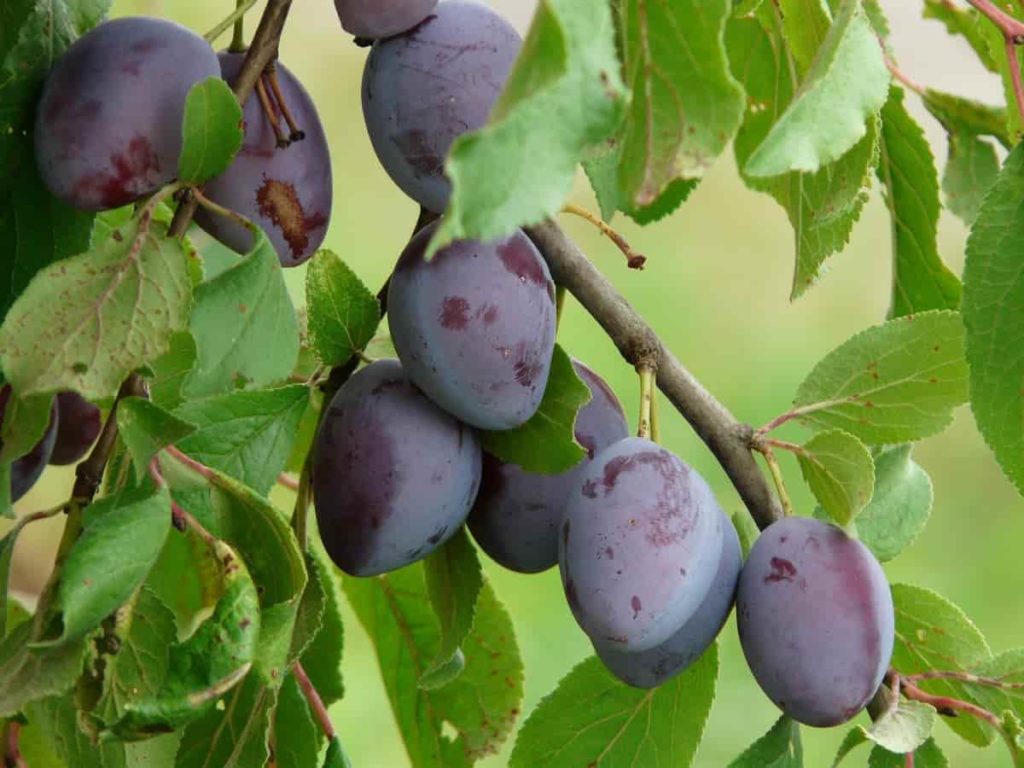
Sunlight needed for your fruit plants
Most fruit plants thrive in full sunshine, but others may thrive in partial shade. However, if other circumstances are normal, plants grow in direct proportion to the amount of light received, thus container-grown fruit plants must be put where they will receive the most solar exposure. Rapid shifts in light exposure must be avoided, which means that plants living in shady areas should not be immediately exposed to full direct sunshine.
Plants that will be cultivated indoors for a portion of the year should be adapted by progressively lowering the amount of sunlight to which they are subjected for 2-3 weeks before transferring them inside, and vice versa for plants that will be relocated outside.
Watering the fruit plants
One downside of growing fruit in pots is the need for frequent watering. Container soil dries up considerably faster than dirt in the ground. Every morning and evening, double-check the containers. When the top inch or two of soil on the fruit plant, tree, or shrub becomes dry, water it until the water drains from the bottom of the container.
Watering plants with soured milk is a fantastic approach to prevent powdery mildew while also adding nutrients to the soil. Gardeners should ensure that their fruit trees have enough drainage. Before planting, add horticultural or cleaned playground sand to the potting soil to promote drainage. Another option is to elevate the plant by using planter “feet” or bricks. This may also help keep ants at bay.
In case you miss this: How to Create a Perfect Balcony Garden: Ideas, Tips for Apartment, and Home
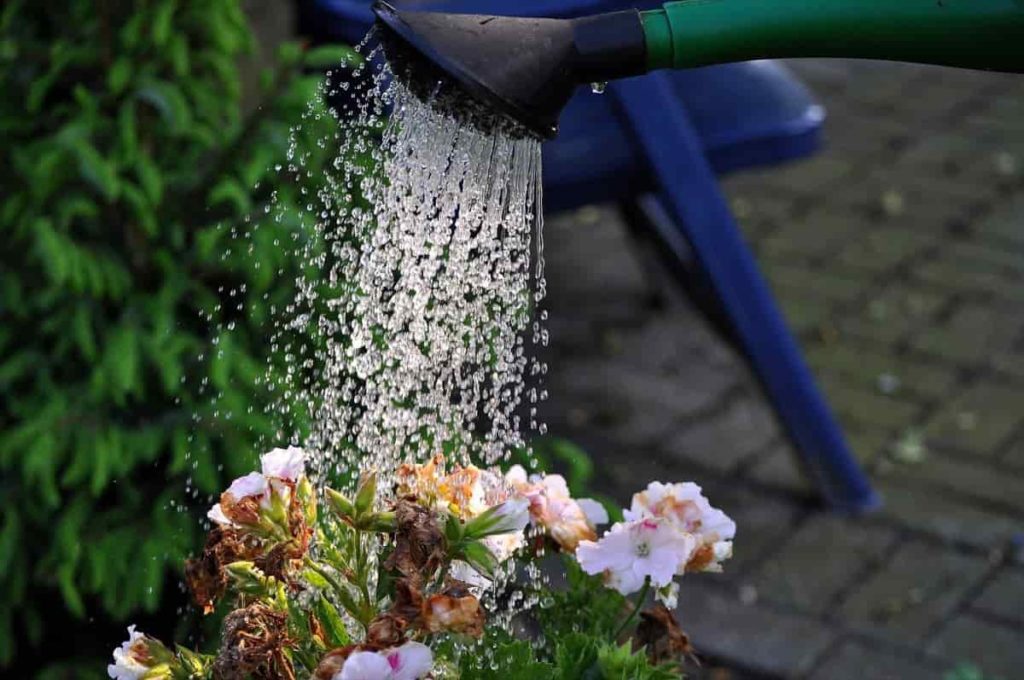
Fertilizing fruit plants
Fertilizer must also be administered more often to potted fruit plants. Every two weeks or so, a balanced 10-10-10 water-soluble fertilizer should be used. Follow the fertilizer manufacturer’s directions for dilution and application frequency. Always water before applying the diluted fertilizer.
To minimize fresh, sensitive leaf development in the winter months, do not apply fertilizer after mid-to late-summer. Gravel added at the bottom of fruit tree pots will keep them from becoming top-heavy. Taller fruit trees, especially when bearing fruit, may require poles or trellises to hold them upright.
Moving your fruit containers indoors
Sometimes fruit trees and shrubs that are sturdy enough to withstand the cold should be relocated indoors or to a safe area in late fall when planted in pots in the winter. A garage will suffice if temperatures do not fall below freezing, while a basement or cool space in the home can suffice when winter temperatures are extremely severe. When the soil becomes dry during the winter, water the plants sparingly.
How to grow flowers on your balcony?
What flowers can you grow on your balcony?
Flowers that grow well in mountains or rock gardens are also good choices for balcony gardening. Balconies, like alpine habitats, are subject to unbuffered winds, and these flowers’ succulent leaves and low profile protect them against desiccation and breaking. Alpine flowers need less water which means they are low-maintenance and less prone to leak on nearby neighbors.
In late April, include Armeria sea pink for beautiful pink blooms. Delosperma is a hardy ice plant, that blooms for a long time and produces daisy-like flowers. Dianthus flowers have a spicy smell that will lift your spirits. Honeybees and butterflies are attracted to penstemon. If you’re not ready to commit to perennial plants, go for drought-tolerant annuals that don’t require much maintenance. Vinca is a self-cleaning plant that does not require deadheading. A million bells resemble small petunias and withstand heavy rains.
In case you miss this: Organic Vegetable Gardening in the Balcony
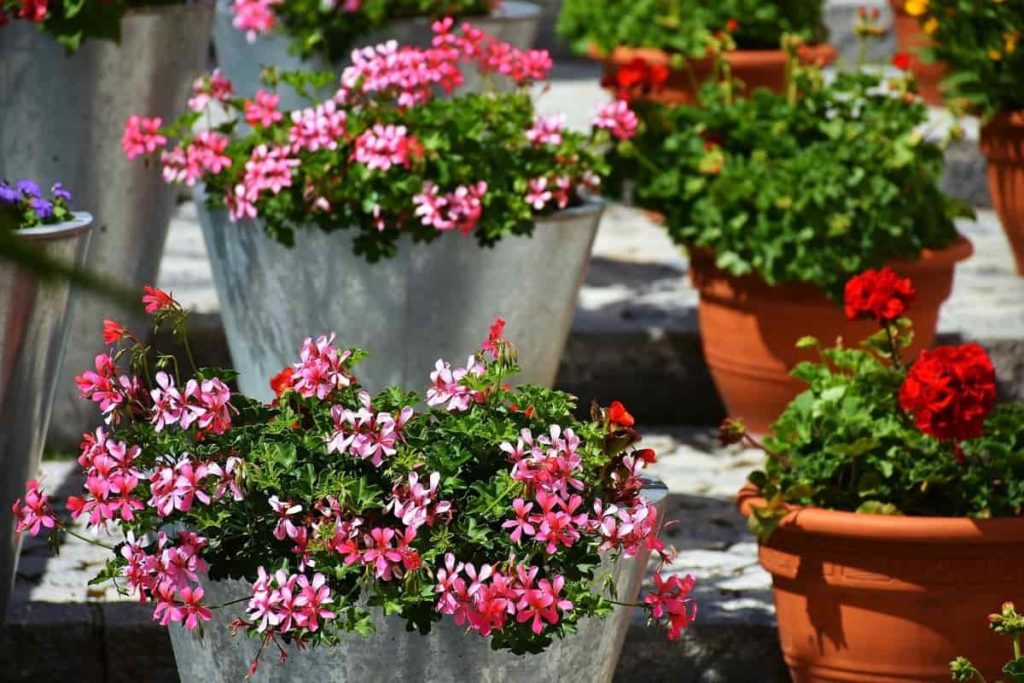
Sunlight needed for flower plants
When the sole light level mentioned for a plant is full sun, that implies it will require at least six hours of direct sunshine to develop and blossom. If you put it in low-light conditions, it will most likely not blossom, and in some situations, the plant will die.
Use proper potting mix for your floral plants
Healthy soil is the foundation of beautiful flower beds. In general, most blooming plants thrive in soil that is loose, well-drained, and rich in organic matter. You don’t need to dig a wide space to plant flowers, but you should excavate enough dirt to add compost to increase soil structure and nutrients. Avoid digging or handling soil when it is moist to avoid compaction.
For roots to develop, plants require a particular amount of space between soil particles. Digging a tiny sample of soil from a 3-inch hole is one test to evaluate if soil can be worked. Compress it into a ball and hurl it into a hard surface like a rock or concrete. If the soil remains together, it’s too wet to plant, but if it shatters, it’s time to plant.
Watering and mulching your flower plants
Soak the mud surrounding your freshly planted flowers thoroughly. Garden flowers require 1 to 2 inches of moisture every week to thrive, so water if you don’t get enough rain. It is preferable to water deeply and seldom rather than shallowly and regularly, as this allows the roots of the plants to develop deeper. If you keep the soil wet, the roots of your blooming plants will rot. A layer of mulch, such as shredded bark, around your new plants can assist delay evaporation and lessen the frequency with which you must water them.
Deadhead and groom the flower plants
As soon as your blooming plants begin to bloom, feel free to cut them for bouquets. Remove spent flower heads to help the plant to focus more energy on its leaves for winter survival. Some flowers, such as zinnias and dahlias, bloom again after the blossoms are removed. For a neater appearance, cut or pluck any brown leaves. The elimination of old leaves is very beneficial to daylilies.
Caring for the plants on your balcony
Watering is probably the most difficult problem for balcony gardeners. The risk of sudden muddy showers will not interest your neighbor underneath you. A drip irrigation system is the greatest way to provide potted plants with the water they require while causing nothing more than condensation below the container. You’ll need a gravity-fed watering system with storage of at least five gallons. Other balcony-watering solutions include utilizing capillary mats or drip caps that attach to recycled two-liter plastic bottles.
Because of the tiny size of a balcony garden, pest management procedures that are normally time-consuming appear practical. Any bug large enough to be plucked may be controlled by handpicking! Put on your gloves and toss all of the slugs, caterpillars, and beetles into a pail of soapy water. Because infestations grow fast in such a short space, nip bugs in the bud as soon as possible.
In case you miss this: Small Balcony Gardening Ideas in India, Design Tips
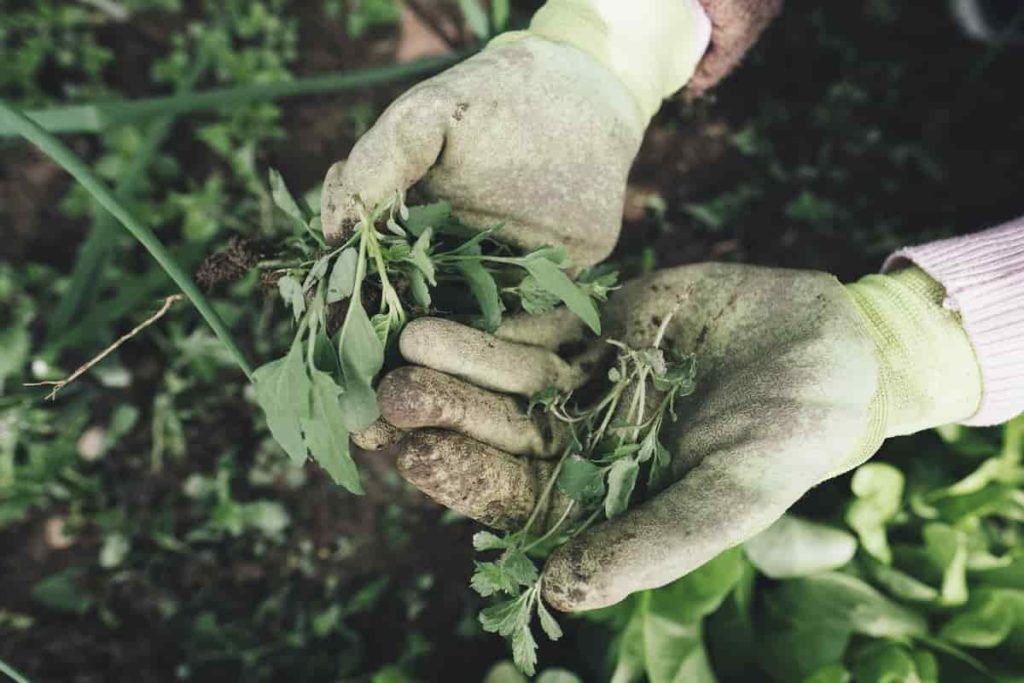
Consider purchasing a kitchen composter to transform clippings and veggie scraps into black gold for your plants while you trim and manicure your balcony garden. Bokashi models guarantee odorless results in a short amount of time. When winter hits, balcony gardeners must determine whether or not to rescue their plants. It’s wonderful for gardeners who utilize annuals to start with fresh specimens each year.
If you have any pricey exotic flowers, you might be able to overwinter them in a sunny window. Hardy perennials may be able to survive the winter in their pots; big containers with good drainage are essential for success here. Finally, you may overwinter big perennials inside by taking cuttings or divisions. This struggle is part of what makes balcony gardening so enjoyable.
- Flower Garden Designs and Layouts for Beginners
- Planting and Spacing Techniques in Papaya: A Beginner’s Guide
- Growing Gold: Essential Techniques for Planting Pineapples
- How to Make Kalanchoe Plant Bushy: Home Remedies and Solutions
- 11 Reasons Why Your Gardenia is Not Blooming: Home Remedies and Solutions
- Eco Elegance: The Guide to Designing a Drought-Tolerant Landscape
- Gardening on a Slope: Strategies for Hillside Landscaping
- Nourish and Flourish: Top Organic Mulches for Thriving House Plants
- Everything You Want to Know about Indian Mogra Flower: Discover Uses and Growing
- Green Thumb Success: Expert Tips for Cultivating Greenhouse Pumpkins All Year Round
- Maximize Growth & Flavor: The Ultimate Guide to Companion Planting in Herb Gardens
- How to Control Rhododendron Problems Naturally: Home Remedies and Organic Ways to Fix Them
- Natural Magic: The Remarkable Benefits of Cinnamon for Plants
- Best Steps to Revive Dying Tulip with Natural and Organic Treatment
- 10 Reasons Why Your Angel Trumpet is Not Blooming: Remedies and Treatment
- How to Fix Periwinkle Leaf and Flower-Related Problems: Natural Remedies and Solutions
- How to Fix Zinnias Leaf and Flower Problems: Discover Natural and Home Remedies
- Organic Steps to Induce Lemon Tree Flowers: A Comprehensive Guide
- Bloom Booster: Crafting the Perfect Homemade Bougainvillea Fertilizer
- Optimizing Growth: A Guide to Applying NPK Fertilizer for Potted Plants
- 10 Best Homemade Fertilizers for Rubber Plant: DIY Recipes and Application Method
- How to Boost Female Pumpkin Flowers: Effective Steps for More Flowers and High Yields
- Transform Your Indoor Garden: Top Benefits of Pink Salt for Houseplants
- 10 Best Homemade Fertilizers for Peacock Plants (Calathea): Easy DIY Guide
- Unlock Blooms: 9 Reasons Why Your Potted Chrysanthemum is Not Blooming
- 8 Reasons Why Your Potted Hibiscus is Not Blooming: Fix it with Simple Solutions
- Unlock Blooms: 9 Key Reasons Your Potted Frangipani Won’t Flower
- 10 Reasons Why Is My Ice Plant Not Blooming: Remedies and Treatment
- 10 Reasons Why My Potted Hydrangea Not Blooming: Treatment and Remedies
- 10 Reasons Why is My Wisteria Not Blooming: Remedies and Treatment
- 10 Reasons Why is My Goldfish Plant Not Blooming: Remedies and Treatment
- Maximize Your Space: Ultimate Guide to Balcony Gardening with Grow Bags
- 10 Reasons Why Your Iris is Not Blooming: Remedies and Treatment
- 10 Reasons Why Your Anthurium Plant is Not Blooming: Treatment and Remedies
- 10 Reasons Why Your Aquaponic Plants Are Not Flowering: Remedies and Treatment
- 10 Reasons Why Your Agapanthus is Not Flowering: Remedies and Treatment